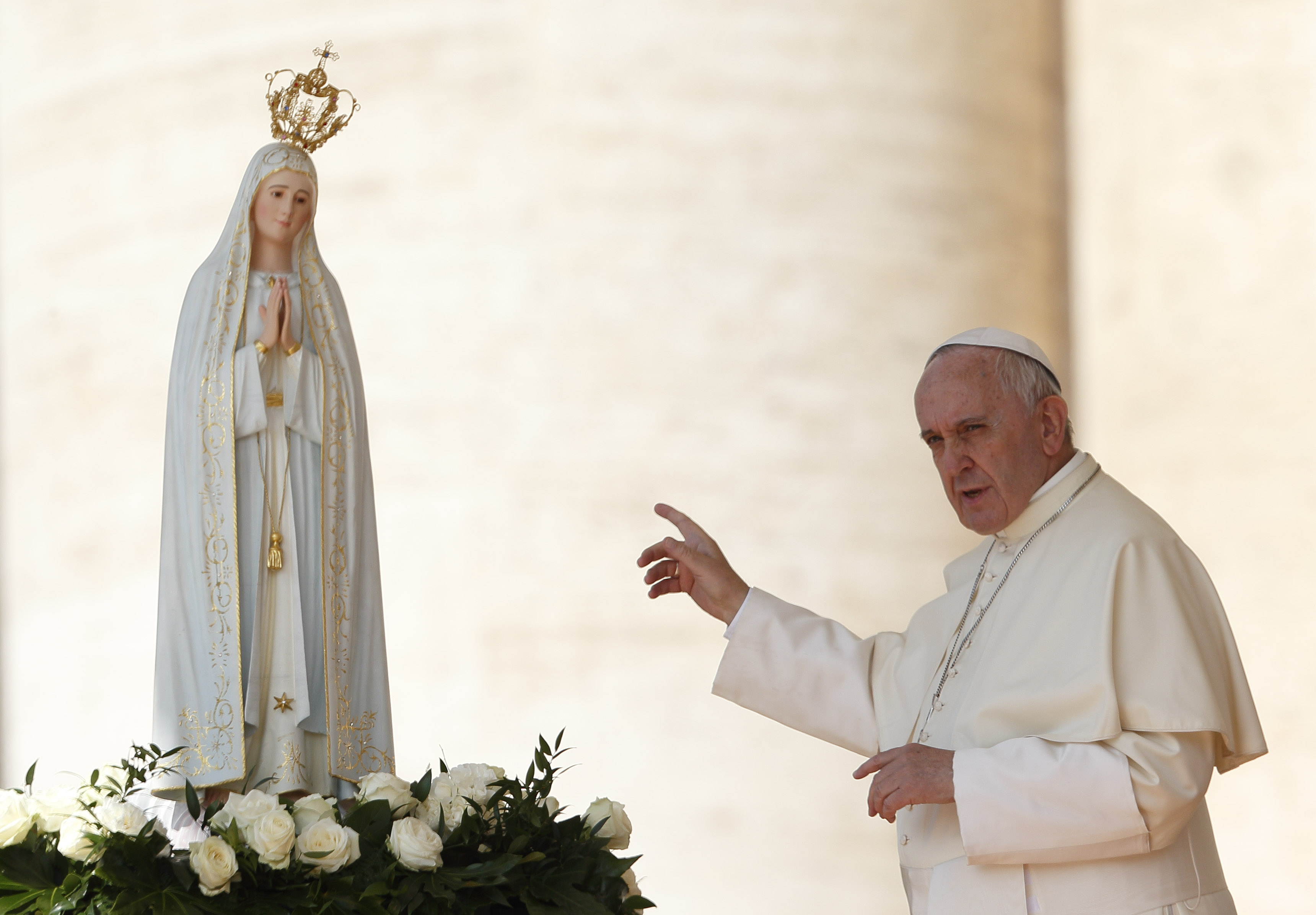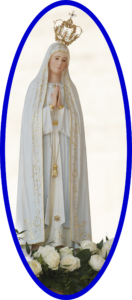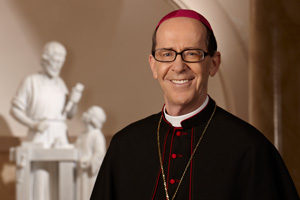
A hundred years ago, on the 13th day of every month from May through October of 1917, the Blessed Virgin Mary appeared to three children near Fatima in Portugal, bringing them an urgent message, calling for repentance and prayer, a message that has no less urgency today. Pope Benedict XVI described Our Lady of Fatima as “the Teacher who introduced the little seers to a deep knowledge of the Love of the Blessed Trinity and led them to savor God Himself as the most beautiful reality of human existence” (May 13, 2010). In a century when atheistic totalitarian regimes would bring the horrors of genocide to hundreds of millions of people, and when equal numbers of innocent children in the womb would die through legalized abortion, this “deep knowledge of the Blessed Trinity” was and continues to be badly needed in our world.
Honored by Pius XII and Popes thereafter


Among all the Church-approved Marian apparitions, Our Lady of Fatima is one of the most popular, especially among the Successors of St. Peter. On May 13, 1946, Pope Pius XII crowned the original statue of Our Lady of Fatima as “Queen of the world.” Blessed Pope Paul VI visited the Fatima Shrine on the 50th Anniversary, May 13, 1967. Both St. John Paul II and Pope Benedict XVI made pilgrimages there; and Pope Francis will do the same, next month, to celebrate the centenary of the first apparition. The Holy Father also will be canonizing the two youngest visionaries, Francisco and his sister Jacinta.
The devotion of St. John Paul II to Our Lady of Fatima was particularly profound. When a would-be assassin tried to take his life on May 13, 1981, the pope attributed his survival to her miraculous intervention. Therefore, as an expression of his filial gratitude, he went to Fatima a year after the assassination attempt and presented to Mary the bullet intended to kill him but which proved unsuccessful because of Divine Providence. That bullet today is part of the crown of Our Lady’s statue in Fatima.
Join us in Celebrating the 100th Anniversary of FatimaEN ESPAÑOL: Centenario de Nuestra Señora de Fátima
Are Apparitions real?


Do saints and angels actually appear to people on earth? The Bible records many times that God spoke to His people by means of messengers from heaven. St. Luke tells us (Lk 1:26f) “… the Angel Gabriel was sent from God to a town of Galilee called Nazareth, to a virgin betrothed to a man named Joseph, of the house of David, and the virgin’s name was Mary.” God sent His angel with a related message to Zechariah (cf. Lk 1:11ff), the father of John the Baptist, and later to Joseph (cf. Mt 1:20ff) to explain to him that it was through the Holy Spirit that this Child was conceived in Mary. An angel brought the joyful news of our Savior’s birth to shepherds (cf. Lk 2:8), and also spoke to Joseph in a dream (cf. Mt 2:13) of the need to flee to Egypt with Mary and the Child Jesus in order to protect them from Herod’s deadly intent. In His Agony in the Garden, the Father sent to Jesus (Lk 22:43) “to strengthen Him an angel from heaven.”
Throughout the Old and New Testaments, and in every age since Jesus’ death and Resurrection, God has sent angels and saints, especially the Mother of God, to bring urgent messages to His people on earth.
False claims of apparitions have also occurred. For that reason, the Church evaluates them with great care and then, when helpful, gives her judgment about their authenticity to protect the faithful from being led astray. In the case of Our Lady of Fatima, it was 13 years after the initial appearances of Mary, October 13, 1930, that the local bishop, +Jose Alves Correia da Silva, issued a pastoral letter approving the apparitions.
Mary, Queen of Peace, Valiant in Battle
From the beginning to the end of the Bible, from the Book of Genesis to the Book of Revelation, God’s words tell us how Mary played a key part in the battle between good and evil. In Genesis (3:15), God said to the serpent, “I will put enmity between you and the woman, and between your offspring and hers ….” In the Book of Revelation (12:1ff), God’s word depicts the battle between Mary, “a woman clothed with the sun,” and Satan, “a huge red dragon, with seven heads and ten horns.” When God chose Mary to be the Mother of His Beloved Son, He called her to engage in continuous conflict with Satan and, at the same time, assured her of His victory. In the messages of Our Lady of Fatima, this is particularly prominent.
The world, then, has been under attack by Satan, from the time of the first sin of Adam and Eve down to the present day. As Jesus was beginning His public ministry, Satan tempted Him repeatedly but was unable to prevail; and the Evil One has continued His assault on the Church in every age. But we are not without hope. By His Cross and Resurrection, Jesus has decisively won the victory over Satan; and He continues to be with us, assuring us of victory, until the end of time. One of the primary ways that Christ comes to our aid is through the intercession and messages of His Beloved Mother. This is why we pray with confidence to Mary in the “Memorare”: “… never was it known that anyone who fled to thy protection, implored thy help or sought thy intercession was left unaided.”
To celebrate, then, the 100th Anniversary of Our Lady of Fatima, I invite all my beloved sons and daughters of the Diocese of Phoenix to join me in a six-month spiritual pilgrimage with Mary. During this time, we shall recall the six apparitions of Our Lady to the children of Fatima, beginning on May 13 and continuing each month until October 13.
Together with St. Elizabeth, who rejoiced at Mary’s visitation, may each of us say (Lk 1:42f), “Most blessed are you among women, and blessed is the fruit of your womb. And how does this happen to me, that the mother of my Lord should come to me?” Let us accompany Our Lady of Fatima in the way that she asked the three young children to do so, through prayer and penance, praying the Rosary every day for the grace of conversion and peace.





